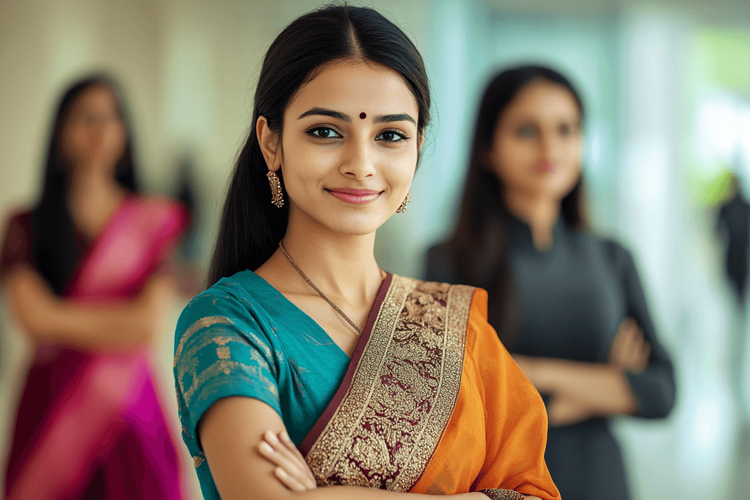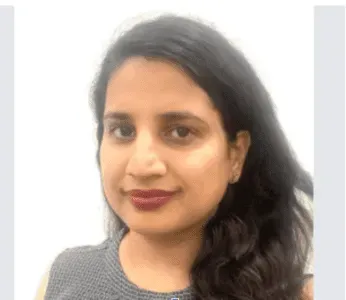Why Beauty Standards Keep Changing Across Time & Culture- Essay

Table of Contents
- Intersectionality and Beauty Standards: One Size Doesn’t Fit
- Beauty Across Generations: Then vs. Now
- The Role of Education in Fighting Beauty Stereotypes
- The Future of Beauty: Towards Fluidity, Not Fixation
- Fast Facts: How Beauty Standards Have Shifted Over Time
- Cultural Influence: Beauty Has No Universal Standard
- Media & Celebrities: The Global Beauty Machine
- Social Media & Digital Filters: A New Age of Artificial Perf
- Political & Economic Factors Behind Beauty Norms
- “Perfect” Is a Moving Target
- Representation Matters: Who Gets to Be Seen as Beautiful?
- Impact on Self-Esteem
- Case Study: Beauty in Bollywood vs. Today’s Indie Films
- Beauty in the Digital Age: AI, Avatars, and Algorithms
- Why It’s Good That Beauty Standards Are Always Changing
- How Can We Raise Children to Understand Beauty Holistically?
- Conclusion:
What we call "beautiful" is far from static. Throughout centuries and continents, physical ideals changed radically - from the curvaceous figures worshiped in the Renaissance to ultra-skinny bodies idolized in the early 2000s. In the present, with the surge of body positivity, natural beauty, and diversity, it's more evident than ever that the standards of beauty are never the same.
These changes aren't haphazard - they're driven by strong cultural, social, technological, and economic forces that define what we find attractive at any moment. Grasping the changes isn't only interesting - it makes us reconsider what beauty is in an ever-changing world.
And that's empowering.
Intersectionality and Beauty Standards: One Size Doesn’t Fit All
The concept of intersectionality - how race, gender, class, and identity overlap - has drastically influenced how we view beauty.
For example:
A beauty ideal that works in urban America may not resonate with rural India.
A standard idolized by cisgender women may alienate trans or non-binary individuals.
Eurocentric beauty norms have historically marginalized women of color worldwide.
This shows that not everyone experiences beauty standards the same way. While one person may benefit from fitting a cultural mold, another may be shamed or excluded by the very same standard.
This is why today’s movements don’t just call for change - they demand inclusion, fairness, and justice in how we portray beauty across identities.
Beauty Across Generations: Then vs. Now
Let’s compare how different generations have perceived beauty:
| Generation | Beauty Norm | Reaction |
|---|---|---|
| Boomers | Polished appearance, fixed gender roles | Conformist |
| Gen X | Diet culture, supermodels | Pressure-driven |
| Millennials | Influencer era, curated beauty | Hyper-aware |
| Gen Z | Raw, real, diverse | Disruptive & inclusive |
Following influencers with acne, stretch marks, and disabilities.
Rejecting traditional makeup in favor of skincare and authenticity.
Using platforms to talk about mental health and body image openly.
The Role of Education in Fighting Beauty Stereotypes
Education is the antidote to most stereotypes- and that includes those surrounding beauty.
Incorporating topics like:
Media literacy (How ads manipulate appearances)
Body positivity (Respecting differences in size, skin, and shape)
Language use (Avoiding harmful phrases like “too dark” or “too skinny”)
...can foster confidence in children from a young age.
The earlier we teach children that beauty is diverse and personal, the more they grow up valuing who they are, not just how they look.
The Future of Beauty: Towards Fluidity, Not Fixation
As AI, digital fashion, and global connectivity evolve, the concept of beauty will become even more fluid and dynamic.
What does this mean?
No more “ideal face”—we’ll see countless variations, with each celebrated for its uniqueness.
More AI inclusion tools—e.g., adaptive beauty filters for disabilities or skin conditions.
Customization over conformity—people will co-create beauty definitions rather than consume them.
And most importantly, language will remain at the center of how we communicate, critique, and evolve our understanding of what beauty means.
Fast Facts: How Beauty Standards Have Shifted Over Time
| Time Period | Dominant Beauty Ideal | Key Features |
|---|---|---|
| Ancient Egypt | Divine appearance | Kohl-lined eyes, golden skin |
| Renaissance | Fertility and prosperity | Full bodies, fair skin |
| Victorian Era | Modesty and refinement | Corsets, pale skin |
| 1920s | Rebellion & modernism | Short hair, slim build |
| 1950s | Domestic perfection | Curvy hourglass figures |
| 1990s-2000s | Heroin chic | Ultra-thin, pale skin |
| 2020s | Diversity & expression | All sizes, natural features |
Cultural Influence: Beauty Has No Universal Standard
What’s considered beautiful in one part of the world may be seen entirely differently in another:
In Japan, smooth, porcelain skin and delicate features are prized.
In Brazil, tanned skin and curvy bodies symbolize health and confidence.
In India, historically, fair skin and long black hair were seen as ideal.
In Africa, fuller figures are admired for signifying strength and prosperity.
Media & Celebrities: The Global Beauty Machine
From Hollywood to Instagram, global media plays a massive role in shaping what society idolizes.
In the 90s, supermodels like Kate Moss popularized the "heroin chic" look.
In the 2000s, celebrities like Kim Kardashian made curvy bodies aspirational.
Today, influencers promote everything from hyper-contoured makeup to bare-faced confidence.
But these representations often project only a narrow slice of reality.

Social Media & Digital Filters: A New Age of Artificial Perfection
The rise of Instagram, TikTok, and beauty apps has introduced digital distortion to beauty norms:
Filters slim noses, enlarge eyes, and even change skin tone.
AI-enhanced beauty influencers like Lil Miquela set standards that aren’t even human.
Teens are undergoing cosmetic procedures to look more like their filtered selfies.
Political & Economic Factors Behind Beauty Norms
1. Political Movements
Feminism challenged traditional beauty roles.
Black Lives Matter & Natural Hair Movements promoted embracing one’s natural features.
Body Positivity broke the idea that beauty comes in just one size.
2. Economic Shifts
In wealthy societies, fitness and slimness show access to leisure and health.
In developing contexts, curves may symbolize affluence and nourishment.
Beauty has become a billion-dollar industry, driven by what’s sold as desirable.
“Perfect” Is a Moving Target
A few examples show how beauty ideals often contradict themselves:
| Decade | Preferred Skin Tone | Ideal Body |
|---|---|---|
| 1950s | Fair & glowing | Voluptuous |
| 1990s | Pale & matte | Extremely thin |
| 2010s | Tanned & highlighted | Curvy but slim waist |
| 2020s | Any skin tone | Inclusive, but still filtered |
Representation Matters: Who Gets to Be Seen as Beautiful?
For decades, mainstream beauty ignored entire communities:
Dark-skinned models were underrepresented.
Disabled, trans, or plus-size individuals were rarely featured.
Non-Eurocentric features were often excluded from global fashion campaigns.
Thankfully, this is changing, with brands now showcasing real diversity.

Impact on Self-Esteem
Constantly evolving standards often create:
Body dysmorphia
Low self-worth
Anxiety and comparison issues
Unhealthy beauty practices (like extreme dieting or skin bleaching)
Social media especially impacts teenagers and pre-teens, creating unrealistic expectations of beauty.
But language and education can become tools for self-liberation, helping children articulate their experiences and resist pressure.
Case Study: Beauty in Bollywood vs. Today’s Indie Films
Old Bollywood: Fair, slim, and traditionally “feminine” heroines.
Now: We see dusky, muscular, and unconventional actors breaking stereotypes.
This evolution reflects not only societal change but also a shift in the audience’s mindset.
Beauty in the Digital Age: AI, Avatars, and Algorithms
The future of beauty may not even involve human features:
AR makeup apps let people “wear” looks without real products.
AI-generated models are being hired for ad campaigns.
Gen Z avatars on platforms like Zepeto and Roblox have exaggerated beauty traits.
Why It’s Good That Beauty Standards Are Always Changing
No single definition can limit you.
It leaves room for everyone to belong.
It reflects evolving values of empowerment, not just appearance.
It challenges stereotypes and creates more room for individuality.
How Can We Raise Children to Understand Beauty Holistically?
Teach them history: Show how beauty ideals have changed.
Encourage media literacy: Explain filters, ads, and influencer strategies.
Celebrate uniqueness: Praise qualities beyond appearance, like kindness, intelligence, and creativity.
Use language wisely: Avoid phrases like “You’d be prettier if…” and replace them with “You are enough.”
Conclusion:
Beauty is not a destination. It’s a journey - redefined in every culture, by every generation.
Instead of chasing the latest trend, empower yourself and your children to understand where these trends come from - and decide what really matters. Because when language, self-worth, and knowledge come together, you no longer need to fit into any mold.
FAQs
Q1. Is beauty temporary or permanent?
Ans. The beauty of an individual is always temporary, while the personality of an individual is permanent. At some point in time, beauty will go away, but the personality will remain the same irrespective of age.
Q2. What is the definition of beauty in an Individual?
Ans. The quality or the combined qualities of an individual that gives pleasure to the senses, mind, as well as spirit, can be termed beauty.
Q3. Why do beauty standards change over time?
Ans. It is said that beauty lies in the eyes of the beholder. In today’s world, women and men both want to be fit to look good. But like fashion, these beauty standards vary over time because of culture.
Q4. Why are beauty standards considered a problem?
Ans. A study found that beauty standards are a problem because it is directly related to depression and anxiety.
Q5. What are the factors that affect the standard of beauty?
Ans. Multiple factors affect the standard of beauty. One of the major factors is people trying new trends to be socially accepted. They are mostly influenced by social media.
Personalized Communication Report
Record a video to get a AI generated personalized communication report for your child

Hi There, want to try these
tips for your child with
LIVE with our expert coach?
Let's check your child's
English fluency
